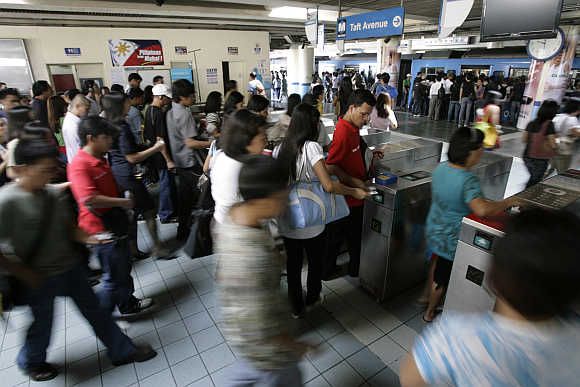 | « Back to article | Print this article |
Other large recipients were China ($60 billion), the Philippines ($25 billion), Mexico ($22 billion), Nigeria ($21 billion), Egypt ($17 billion), Pakistan ($15 billion), Bangladesh ($14 billion), Vietnam ($11 billion) and Ukraine ($10 billion).
.jpg?w=670&h=900)
Describing remittances as a significant source of inflows to many developing countries like India, which received maximum remittances in 2013, the World Bank has called for removing impediments to its flows arguing that remittances are more stable than other capital flows.
In a report released on Wednesday, the World Bank said remittances have been stable during episodes of financial volatility when capital flows fell sharply.
This stabilising effect tends to be greater for remittance-receiving countries with a more dispersed migrant population, it said.
In 2013, India ranked top on receiving $70 billion in remittances.

Other large recipients were China ($60 billion), the Philippines ($25 billion), Mexico ($22 billion), Nigeria ($21 billion), Egypt ($17 billion), Pakistan ($15 billion), Bangladesh ($14 billion), Vietnam ($11 billion) and Ukraine ($10 billion).
The World Bank in its report said the relative importance of remittances as a source of external resources is also expected to increase further, as growth in private capital flows to developing countries may moderate when interest rates begin rising in advanced economies, or if growth in developing economies remains weak.
Since 2000, remittances to developing countries have averaged about 60 per cent of the volume of total foreign direct investment flows.

For many developing countries, remittances are the single largest source of foreign exchange.
The World Bank study finds that, in addition to their considerable volume, remittances are more stable than other types of capital flows, even during episodes of financial stress.
For example, during past sudden stops, when capital flows fell on average by 14.8 per cent, remittances increased by 6 per cent.

The stable nature of remittance flows, the analysis concludes, means that they can help smooth consumption in developing countries, which often experience macroeconomic volatility.
Noting that remittances are associated with more stable domestic consumption growth, the report said countries with large remittance receipts tend to display less correlation between output and consumption growth over the business cycle, implying that the remittances have the potential enhance welfare during downturns.
Observing that the stabilising force of remittances provides a rationale for removing impediments to remittance flows, the bank said specific actions to be considered include cutting the cost of remittances, such as by encouraging competition in money transfer services; removing remittance taxes; and avoiding multiple currency regimes that reduce the local currency value of remittances.